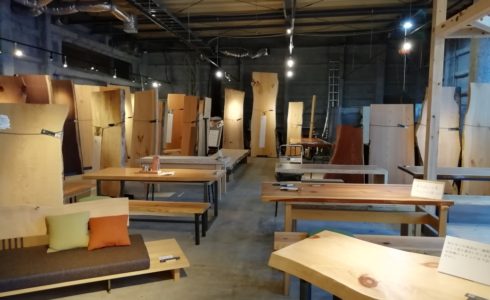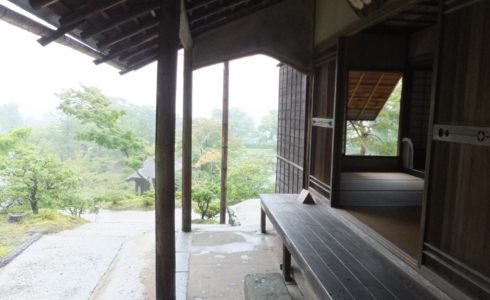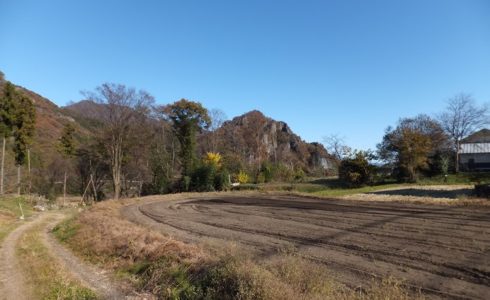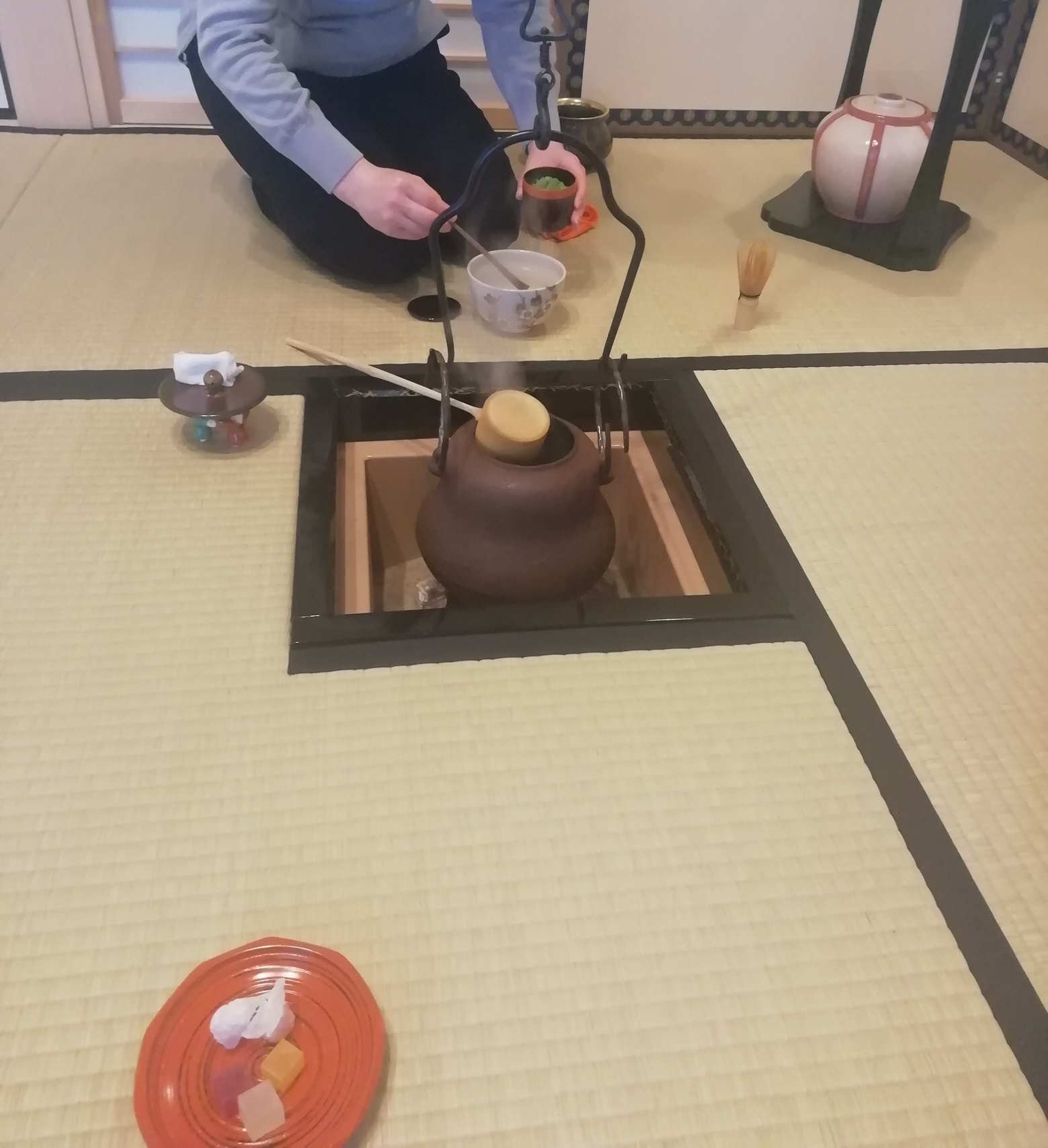
What is the Japanese tea ceremony? Enjoying traditional Japanese architecture
Today I would like to introduce you to the Japanese tea ceremony, which I am learning.
The custom of drinking tea is said to have started in China as far back as B.C., and was introduced to Japan along with Buddhism during the Tang Dynasty. At this time, however, only the aristocracy and monks were allowed to drink tea, and it was used for medicinal purposes such as fever-reducing and drowsiness-relieving. The Zen monk Eisai (1141-1215), who was born in the early Kamakura period, brought back many seedlings and seeds from China on his return in 1191, and advocated the drinking of tea in his book. Since drinking alcohol was forbidden for Buddhist priests, drinking tea was recommended as a substitute, and the custom spread mainly in temples. After the Muromachi period, the art of tea ceremony was formed by Murata Jyukou (1423-1502) and Sen no Rikyu (1522-91).
I would like to explain a little about the tea ceremony that I am learning now. There is a tea room of 6 tatami mats or 4.5 tatami mats in size (1 tatami mat is 1.82m x 0.91m etc.), where the host (teisyu) makes tea and entertains guests, who enjoy conversation with the host and taste tea and sweets. In addition, everyone enjoys the beauty of the building and the garden, the flowers in the tea room, the ink paintings and calligraphy in the tokonoma (alcove), the tea bowls, trays and other tea utensils used for entertaining, the fragrance of the incense.
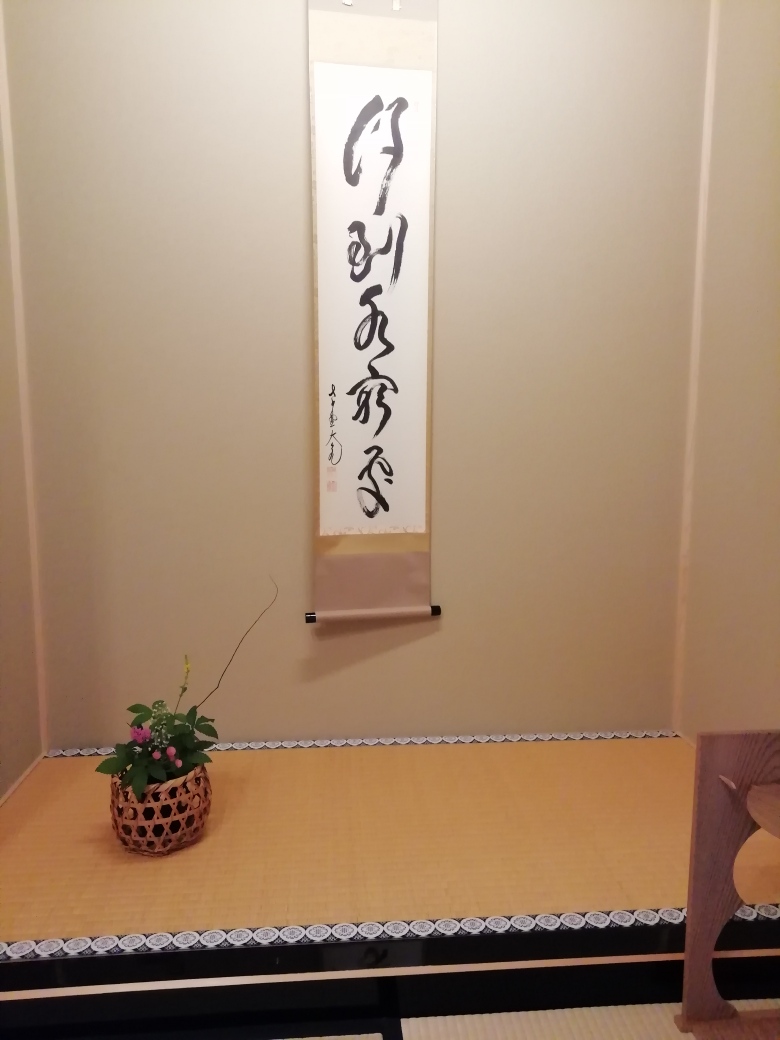
At a tea ceremony lesson the other day, this calligraphy was displayed in the tokonoma of the tea room. It is the first half of a ten-character poem “行到水窮處 坐看雲起時” that says, “I wandered and reached the source of the stream, and sat down and saw the clouds just about to rise.”
This poem has been chosen because it is thought that a scene with water, which evokes a cool feeling, is appropriate for hospitality on a hot summer day.
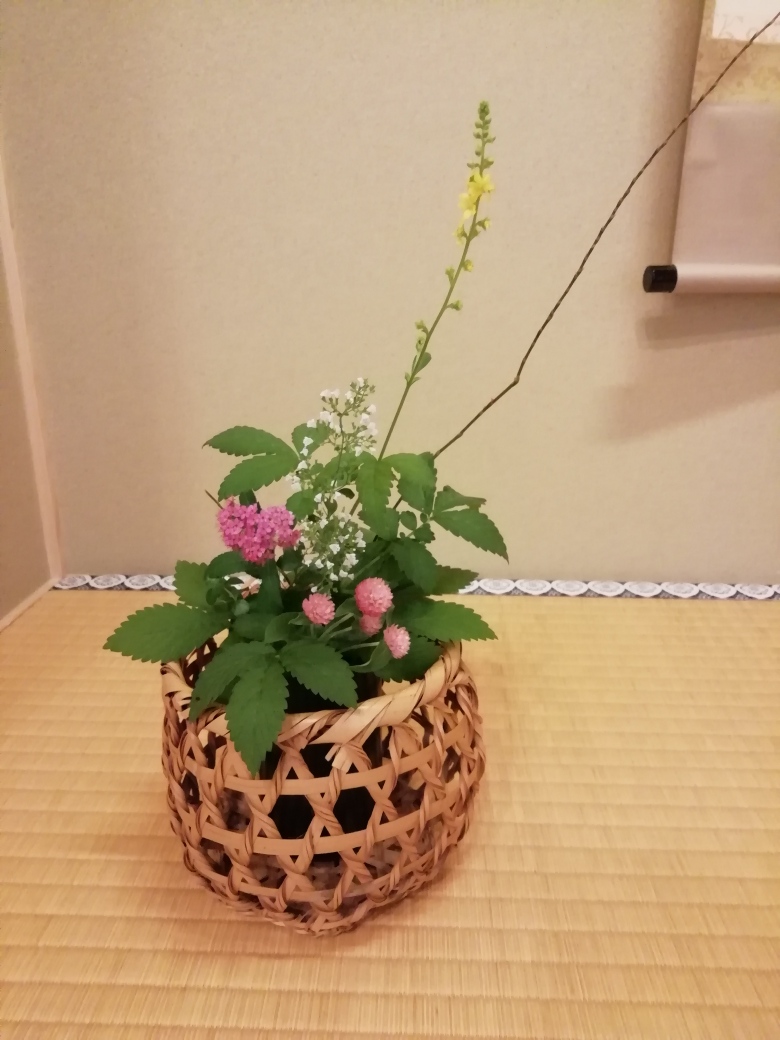
This is a decoration from a summer’s day, in the tokonoma (alcove) we have placed seasonal flowers in a container that expresses a cool sensation.
Please note that the eye catching image in this blog shows a winter arrangement. In winter, a fire is built between the guest and the host to provide warmth for the guest.
Next, I would like to write more about teahouses as architecture and interior design.
What is the design of a tea room for such a meeting place? Sen no Rikyu’s ideal was to recreate the atmosphere of a mountain village, away from the secular world. Such a tea room is called a so-an tea room. The word so-an means a simple house with a roof made of straw or thatch. Therefore, the design of the tea room should be simple, rather than glittering and extravagant. Smaller, more intimate spaces are more in keeping with the image of a tea house.
In addition, because of the Japanese custom of enjoying the changing of the seasons, it is customary for the tea ceremony room to be decorated according to the seasons. A sense of the season is expressed in almost every element of the tea ceremony, including the decoration of the furnace, where charcoal is heated and water is boiled, the design of the utensils and tableware used, the flowers arranged in the tea room, the art of the hanging scrolls, and the design of the sweets.
Swords were not allowed in the tea room, even if the guest was a warrior(samurai in Edo period). For this reason, some of the entrances to tea rooms are deliberately small and designed so that it is impossible to enter with a sword on. The edges of the tatami mats in the teahouse are intentionally designed to be simple and without pattern so that people of all classes can enjoy the tea ceremony. (In contrast, in the Edo period, the design of the edge of the tatami used in ordinary houses depended on the status of the person.)
From the time of Sen no Rikyu onwards, the tea ceremony became a means of socialising for politicians and businessmen. It is like golf nowadays. For this reason, wealthy people often have tea rooms in their homes. If you have an overview of the tea ceremony, you can enjoy visiting traditional Japanese architecture such as Katsura Rikyu Imperial Villa or Shugakuin Rikyu Imperial Villa and imagine what it would have been like to hold a tea ceremony.

